The following is a summary of the transport system of the Republic of North Macedonia.
Transport in Poland involves air, water, road and rail transportation. The country has a large network of municipal public transport, such as buses, trams and the metro. As a country located at the 'cross-roads' of Europe, Poland, with its highly developed economy, is a nation with a large and increasingly modern network of transport infrastructure.

Transport in Spain is characterised by an extensive network of roads, railways, rapid transit, air routes, and ports. Its geographic location makes it an important link between Europe, Africa, and the Americas. Major forms of transit generally radiate from the capital, Madrid, located in the centre of the country, to link with the capitals of the autonomous communities.
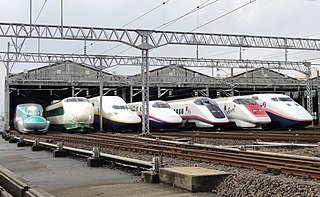
The Shinkansen, colloquially known in English as the bullet train, is a network of high-speed railway lines in Japan. Initially, it was built to connect distant Japanese regions with Tokyo, the capital, to aid economic growth and development. Beyond long-distance travel, some sections around the largest metropolitan areas are used as a commuter rail network. It is owned by the Japan Railway Construction, Transport and Technology Agency and operated by five Japan Railways Group companies.

Inter-city rail services are express passenger train services that run services that connect cities over longer distances than commuter or regional trains. They include rail services that are neither short-distance commuter rail trains within one city area, nor slow regional rail trains stopping at all stations and covering local journeys only. An inter-city train is typically an express train with limited stops and comfortable carriages to serve long-distance travel.

Nikšić, is the second largest city in Montenegro, with a total population of 56,970 located in the west of the country, in the centre of the spacious Nikšić field at the foot of Trebjesa Hill. It is the center of Nikšić Municipality with population of 72,443 according to 2011 census, which is the largest municipality by area and second most inhabited after Podgorica. It was also the largest municipality by area in the former Yugoslavia. It is an important industrial, cultural, and educational center.
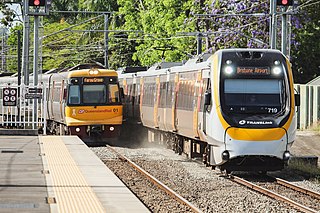
Rail transport in Australia is a component of the Australian transport system. It is to a large extent state-based, as each state largely has its own operations, with the interstate network being developed ever since Australia's federation in 1901. As of 2022, the Australian rail network consists of a total of 32,929 kilometres (20,461 mi) of track built to three major track gauges: 18,007 kilometres (11,189 mi) of standard gauge, 2,685 kilometres (1,668 mi) of broad gauge, and 11,914 kilometres (7,403 mi) of narrow gauge lines. Additionally, about 1,400 kilometres (870 mi) of 610 mm / 2 ft gauge lines support the sugar-cane industry. 3,488 kilometres (2,167 mi), around 11 per cent of the Australian heavy railways network route-kilometres are electrified.

Yugoslav Railways, with standard acronym JŽ, was the state railway company of Yugoslavia, operational from the 1920s to the 1990s, with its final incarnation transferring to Serbia, the successor of JZ is the joint stock company of the Serbian Railways in 2006.

The Belgrade–Bar railway is a railway connecting the Serbian capital of Belgrade with the town of Bar, a major seaport in Montenegro.

The rail network in Queensland, Australia, was the first in the world to adopt 1,067 mm narrow gauge for a main line, and now the second largest narrow gauge network in the world, consists of:
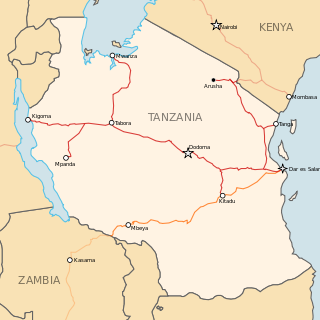
Rail transport in Tanzania is conducted by two companies. It has historically used narrow gauge trackage, but planning and construction of new standard gauge lines is underway as of 2017.

The Budapest Castle Hill Funicular or Budavári Sikló is a funicular railway in the city of Budapest, in Hungary. It links the Adam Clark Square and the Széchenyi Chain Bridge at river level to Buda Castle above.

The railways in Albania are administered by the national railway company Hekurudha Shqiptare (HSH). It operates a standard-gauge railway gauge rail system in Albania. All trains are hauled by Czechoslovak-built ČKD diesel-electric locomotives.

Rail transport in Montenegro is operated by four separate companies, which independently handle railway infrastructure, passenger transport, cargo transport and maintenance of the rolling stock. The four companies were a part of public company Railways of Montenegro until it was split up in 2008.

The Polish railways network consists of around 18,510 kilometres (11,500 mi) of track as of 2019, of which 11,998 km (7,455 mi) is electrified. The national electrification system runs at 3 kV DC.
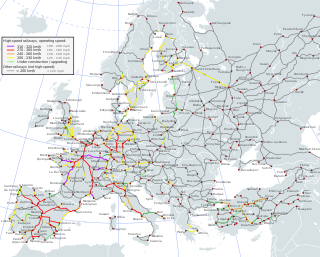
High-speed rail (HSR) has developed in Europe as an increasingly popular and efficient means of transport. The first high-speed rail lines on the continent, built in the 1970s, 1980s, and 1990s, improved travel times on intra-national corridors. Since then, several countries have built extensive high-speed networks, and there are now several cross-border high-speed rail links. Railway operators frequently run international services, and tracks are continuously being built and upgraded to international standards on the emerging European high-speed rail network.
The Podgorica–Shkodër railway is a railway connecting Albania and Montenegro, used for freight-purposes only. It is Albania's only international rail link. Although initially built between 1984 and 1985, it fell into disuse in 1991 and later fully reopened in 2003.
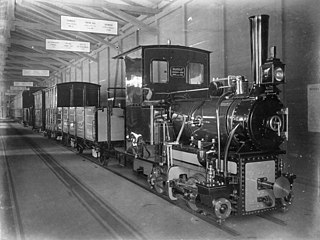
Most Bosnian-gauge railway lines were built during the Austro-Hungarian Empire. Several 760 mm gauge railways were planned in order to link the extensive narrow-gauge railways in the Austro-Hungarian Empire with those in Bosnia and Herzegovina. Until the outbreak of the Balkan Wars in 1912 several were constructed.

The CAF Civity is a platform of regional passenger trains which is manufactured by Spanish rolling stock manufacturer Construcciones y Auxiliar de Ferrocarriles. Available as both diesel, electric and battery-electric multiple unit, the Civity was first launched in 2010 and received its first order two years later.
















